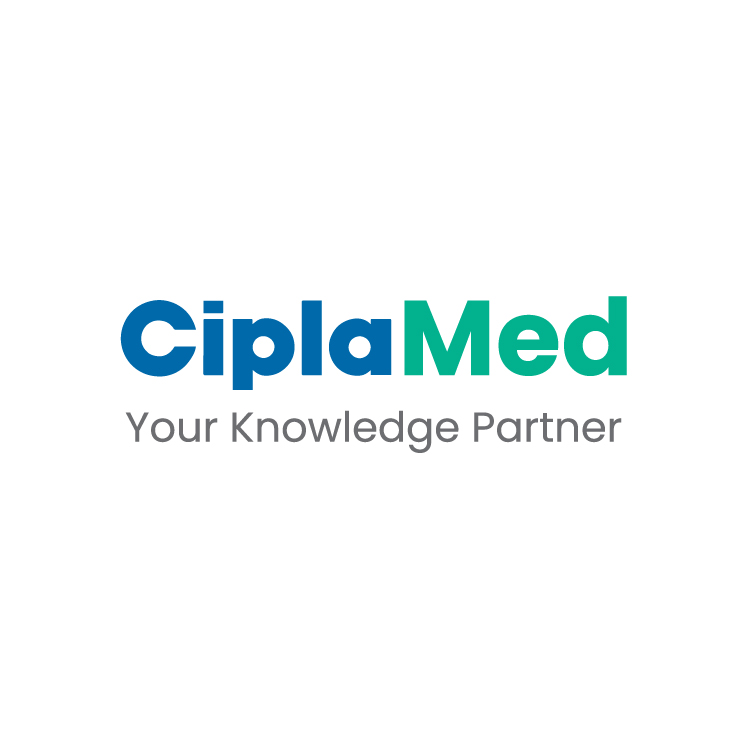ACR 2025: Highlights from Day 1
Comparative Risk of Infection-Related Complications in Systemic Lupus Erythematosus Patients Treated with Anifrolumab versus Belimumab: A Target Trial Emulation
Presenter: Teng-Chieh Hsu
This retrospective cohort study compared infection risks between anifrolumab and belimumab in systemic lupus erythematosus (SLE) patients using TriNetX data.
After exclusions and propensity score matching, 481 patients per group were analyzed. Anifrolumab users had a significantly higher infection risk (HR 1.40), with increased rates of herpes zoster and COVID-19. White patients showed elevated infection risk with anifrolumab. Time-dependent analysis suggested prolonged treatment may intensify infection risk. No significant differences in mortality or hospitalizations were found. These findings highlight the need for vigilant infection monitoring and tailored preventive strategies when using anifrolumab in SLE treatment.
In Vivo Generation of Anti-CD19 CAR T Cells Utilizing Circular RNA Encapsulated in Targeted Lipid Nanoparticles
Presenter: Xiaoyu Pan
This study presents tLNP-circCAR, a novel in vivo CAR T-cell therapy using circular RNA encapsulated in targeted lipid nanoparticles (tLNPs) to generate anti-CD19 CAR T cells.
Unlike traditional ex vivo methods, this approach simplifies manufacturing and avoids viral vectors and chemotherapy. In preclinical models, tLNP-circCAR effectively engineered both activated and non-activated human T cells, showing strong cytotoxicity against B cells and CD19+ tumors. A single dose led to complete B cell depletion and tumor remission in mice, and significant B cell reduction in monkeys. This platform offers a promising, scalable solution for treating B cell-related cancers and autoimmune diseases.
An Open-label, Randomized, Controlled Phase 1/2 Study to Assess the Safety and Efficacy of KYV-101 Anti-CD19 CAR-T Cell Therapy in Active and Difficult-to-treat ACPA Positive Rheumatoid Arthritis: Preliminary Results of the COMPARE Trial
Presenter: Fredrik Albach
The COMPARE Phase 1 trial evaluates KYV-101, a fully human anti-CD19 CAR T-cell therapy, in difficult-to-treat rheumatoid arthritis (D2T-RA).
Six ACPA-positive patients (mean disease duration: 10.8 ± 6.9 years; prior therapies: 5.8 ± 1.7) were apheresed; two received KYV-101 by May 2025. Both showed complete peripheral B-cell depletion and ACPA reductions to 19% and 5% of baseline. CAR T-cell expansion peaked at 479 and 122 cells/mL. Transient grade I–II CRS resolved with tocilizumab and dexamethasone; no ICANS or serious adverse events occurred. These preliminary results suggest KYV-101 is safe and effective in inducing immune reset in refractory RA, supporting further randomized evaluation.
Impact of Secukinumab on Cardiovascular Disease in Patients with Psoriasis, PsA, and Axial Spondyloarthritis: A Systematic Review of Existing Evidence
Presenter: Javier R Godo
Secukinumab, a selective IL-17A inhibitor, was evaluated for cardiovascular (CV) impact in psoriasis, psoriatic arthritis (PsA), and axial spondyloarthritis (axSpA). A systematic PubMed review (to May 2025) identified 46 eligible studies from 198 articles, including 13 RCTs and 9 meta-analyses.
Data from >20,000 patient-years showed no increased incidence of major adverse CV events (MACE). Secukinumab improved systemic inflammation markers (e.g., C-reactive protein, neutrophil-to-lymphocyte ratio), reduced arterial stiffness, and enhanced endothelial function and coronary flow reserve. These findings suggest a favorable CV safety profile and potential vascular benefits, warranting further large-scale randomized trials.
SPECTREM: Guselkumab Significantly Improves Patient Reported Outcomes at Week 16 in Participants with Low Body Surface Area, Moderate Psoriasis with Special Sites Involvement
Presenter: Jennifer Soung
The Phase 3b SPECTREM trial evaluated guselkumab 100 mg in 338 patients with low body surface area (BSA; 2%–15%), moderate psoriasis (IGA=3), and ≥1 special site involvement.
Participants were randomized 2:1 to guselkumab (n=225) or placebo (n=113). At baseline, mean BSA was 7.6%, Psoriasis Symptoms and Signs Diary (PSSD) total symptoms score 53.8, itch score 6.8, and Dermatology Life Quality Index (DLQI) 11.5. After 16 weeks, guselkumab significantly reduced PSSD symptoms (–36.08 vs 0.37; p < 0.001) and itch (≥4-point reduction in 62.7% vs 12.5%; p < 0.001). DLQI 0/1 was achieved in 48.9% vs 3.5% (p < 0.001). Guselkumab improved quality of life and symptom burden after just 3 doses, with no new safety signals observed.
Real World Experience with Generic Tofacitinib in Axial Spondyloarthritis from North India
Presenter: Sanjeev Kapoor
A single-centre retrospective study evaluated generic tofacitinib (5 mg BID for 24 weeks) in 100 Indian patients with active axial spondyloarthritis (AxSpA; mean age 35.95 years, disease duration 8.2 years).
Tofacitinib significantly reduced Ankylosing Spondylitis Disease Activity Score C-Reactive Protein (ASDAS-CRP) scores from 2.94 to 1.18 (mean difference 1.76; 95% CI: 1.56–1.96; P < 0.001) and CRP levels from 13.85 mg/L to 4.69 mg/L (mean difference 9.16; 95% CI: 7.23–11.09; P < 0.001). Nearly 71% achieved inactive disease (ASDAS-CRP < 1.3). Adverse events were infrequent: herpes zoster (6%), respiratory infections (3%), and pulmonary embolism (1%). These findings support tofacitinib’s efficacy, safety, and affordability as an NSAID-sparing option for AxSpA management in resource-limited settings.
Comparable Efficacy of FK-Tocilizumab and Reference Tocilizumab in Rheumatoid Arthritis Patients with and without Prior Biologic Exposure
Presenter: Ernest Choy
FK-Tocilizumab (FK-toci), the first FDA and EMA-approved tocilizumab biosimilar for moderate-to-severe rheumatoid arthritis (RA), was compared to the originator tocilizumab in 604 patients with and without prior biologic use.
FK-toci showed similar Disease Activity Score reduction and American College of Rheumatology 20% improvement criteria (ACR20) response rates vs. originator at week 24. Patients with prior biologic use had slightly lower ACR20 rates (77.8%) vs. biologic-naïve patients (83.3%), but both treatment groups performed similarly. With ~50,000 patient-treatment-years of exposure and no new safety concerns, FK-toci supported better access to effective RA therapy, including for patients with refractory disease histories.
Use of Upadacitinib in Real-World Clinical Practice: Patient Characteristics and Glucocorticoid-Sparing Effect
Presenter: Virginia Ruiz-Esquide
An observational study evaluated real-world efficacy and glucocorticoid (GC)-sparing effect of upadacitinib (UPA) in 99 rheumatoid arthritis patients (89.9% women). UPA was initiated as ≥3rd-line advanced therapy in combination with disease-modifying antirheumatic drugs in 53.5% and with GCs in 70% patients.
Over 12 months, UPA showed sustained effectiveness, with 67% achieving low disease activity/remission. A notable GC-sparing effect was observed, with over half of patients discontinuing GC (69.7% baseline vs. 33% 12 months). Treatment response and disease severity was consistent across elderly and young age groups. UPA was well tolerated with minimal discontinuations, supporting its effectiveness in routine clinical practice.
Impact of Baricitinib on Cardiovascular Health in Biologic-naïve Rheumatoid Arthritis Patients: A Comparative Study with TNF Inhibitors and Conventional DMARDs
Presenter: Chary López Pedrera
This prospective study compared Baricitinib (4 mg/day), TNFi, and cDMARDs in RA patients (n=25/group; DAS28 ≥ 3.2) over 12 months.
All treatments improved disease activity, with Baricitinib achieving the highest remission rates at 6 and 12 months. Baseline hypercoagulability (elevated D-dimer) was reduced across therapies. Genetic thrombophilia (Factor V Leiden, prothrombin) was rare; the prevalence of carotid plaque and CV risk factors were similar. Transcriptomics revealed distinct gene expression shifts, with shared modulation of inflammation interferon response and cell metabolism. Proteomics showed Baricitinib altered 68 proteins (vs. TNFi 38, cDMARDs 39), uniquely regulating 51 linked to cytokine signaling, angiogenesis, and matrix remodeling. These molecular changes suggest Baricitinib may reduce CV risk while offering superior clinical efficacy.
Real-world Effectiveness and Usage of Voclosporin: Data from the Enlight-LN Registry
Presenter: Leanna Wise
The Enlight-LN registry evaluated real-world outcomes of voclosporin in adults (n=229) with biopsy-confirmed lupus nephritis (LN). Median age of the study population was 34 years; 83.4% were female. Most stud subjects had Class V (31.4%) or Class IV (20.1%) LN.
Voclosporin, combined with mycophenolate mofetil and low-dose glucocorticoids, reduced median urine protein-to-creatinine ratio (UPCR) from 2.3 g/g to 0.9 g/g at 6 months (n=89), while maintaining stable eGFR (89.3 to 82.0 mL/min/1.73 m²). Safety data aligned with prior trials. These findings support the 2024 ACR guideline endorsing triple immunosuppressive therapy, including calcineurin inhibitors, as first-line treatment for active LN, with voclosporin demonstrating efficacy and tolerability across diverse patient populations.
Patient Characteristics and Treatment Patterns of Traditional and Advanced Therapies Prior to First Secukinumab Intravenous (IV) Administration in Patients with Spondyloarthritis (SpA) in US Real-World Clinical Settings
Presenter: Alan Kivitz
This retrospective cohort study analyzed 255 patients with spondyloarthritis (SpA) who were initiated on intravenous (IV) secukinumab between the period 2023-2024. Most patients had psoriatic arthritis (PsA, 65.5%), axial SpA (25.5%), or both (9.0%). Mean age of the study population was 55.5 years and 73.3% of them were females.
Comorbidities were common: osteoarthritis/osteopenia (64.7%), neurological disorders (56.1%), plaque psoriasis (52.2%), and obesity (48.6%). Mean Deyo-Charlson Comorbidity Index was 2.8, and 43.9% of patients had a score of >3.0. Prior to IV secukinumab, 73.7% used traditional therapies and 37.3% used advanced therapies (bDMARDs: 33.3%, tsDMARDS: 9.0%, or a combination of both; 5.1%). Median time from SpA diagnosis to IV initiation was 34.6 months. IV secukinumab was adopted in patients with longstanding, complex disease, highlighting its role as an alternative to subcutaneous biologics.
ACR 2025, 24th-29th Oct 2025, Chicago, Illinois, USA.



.webp?updated=20241028052153)
